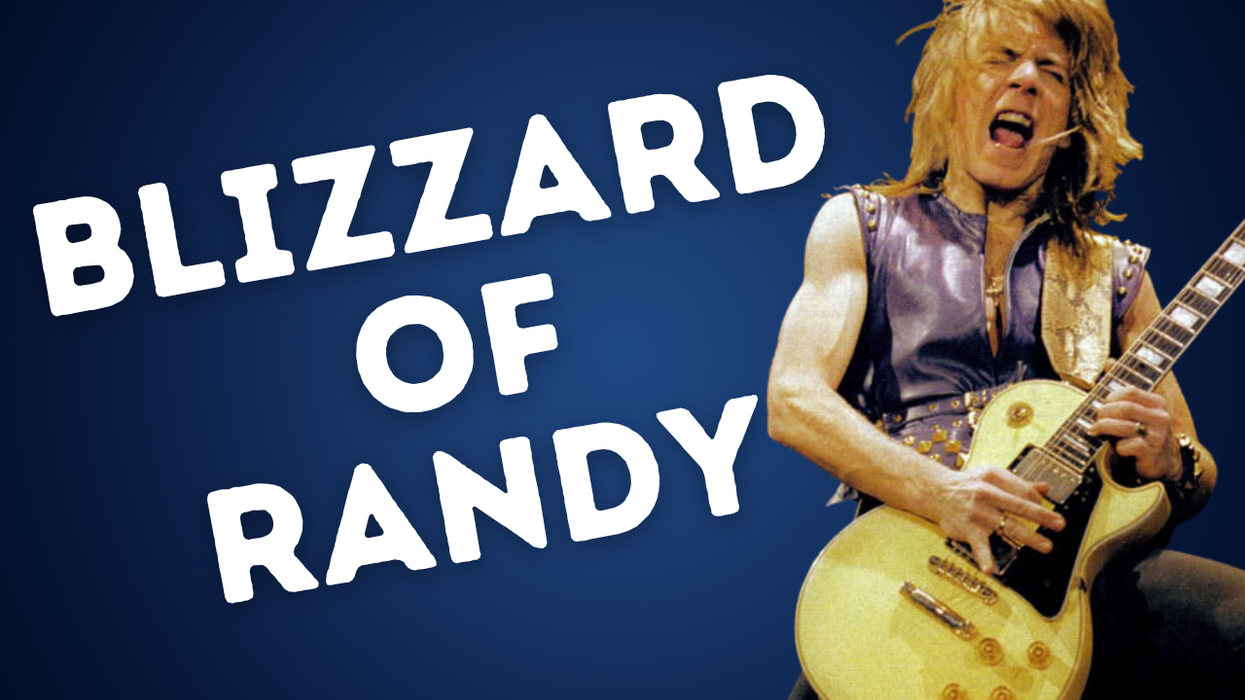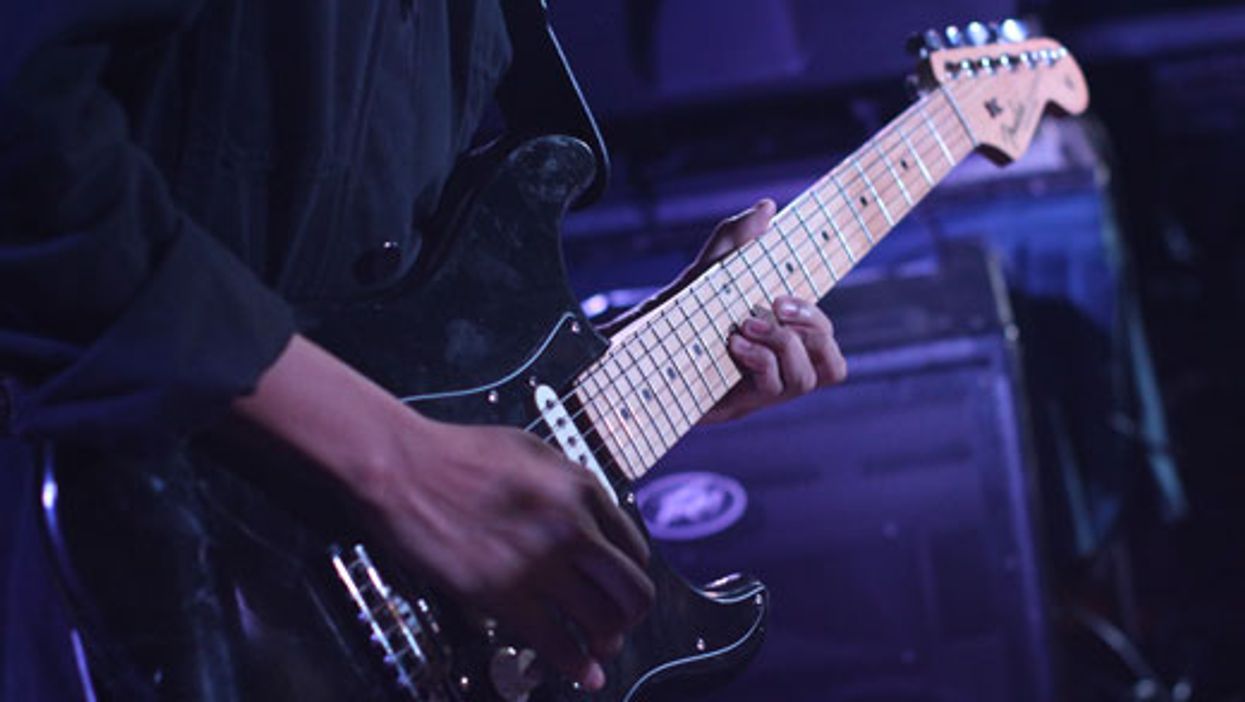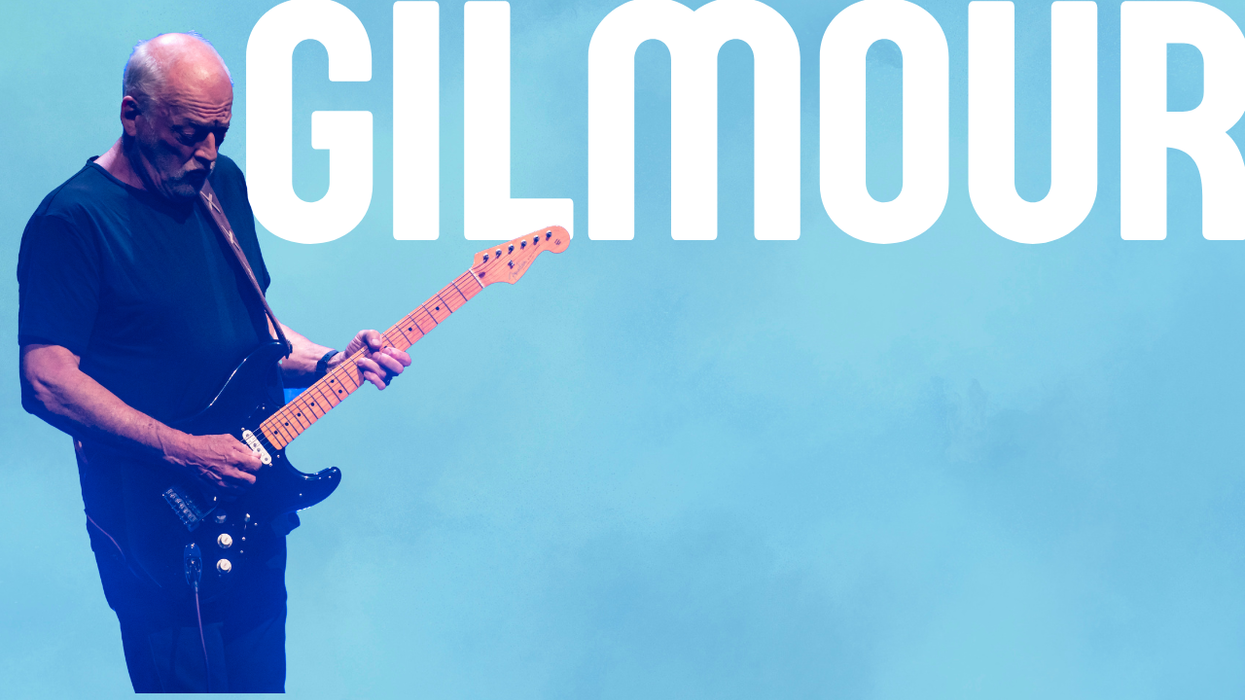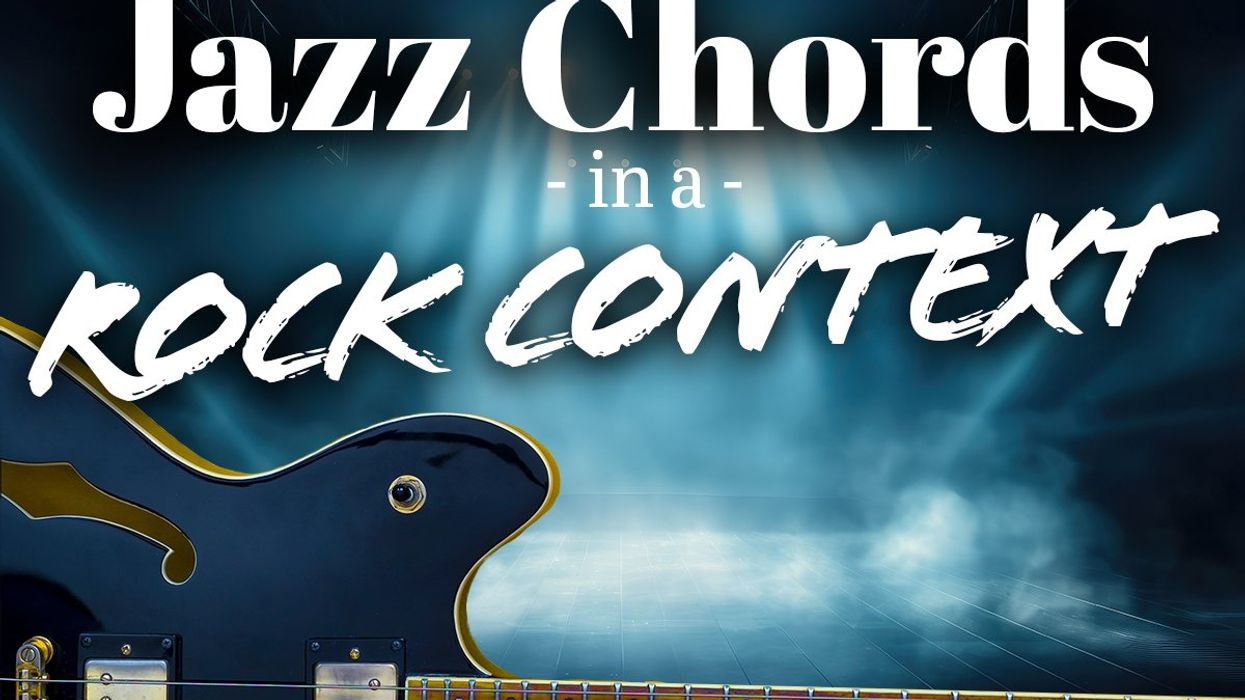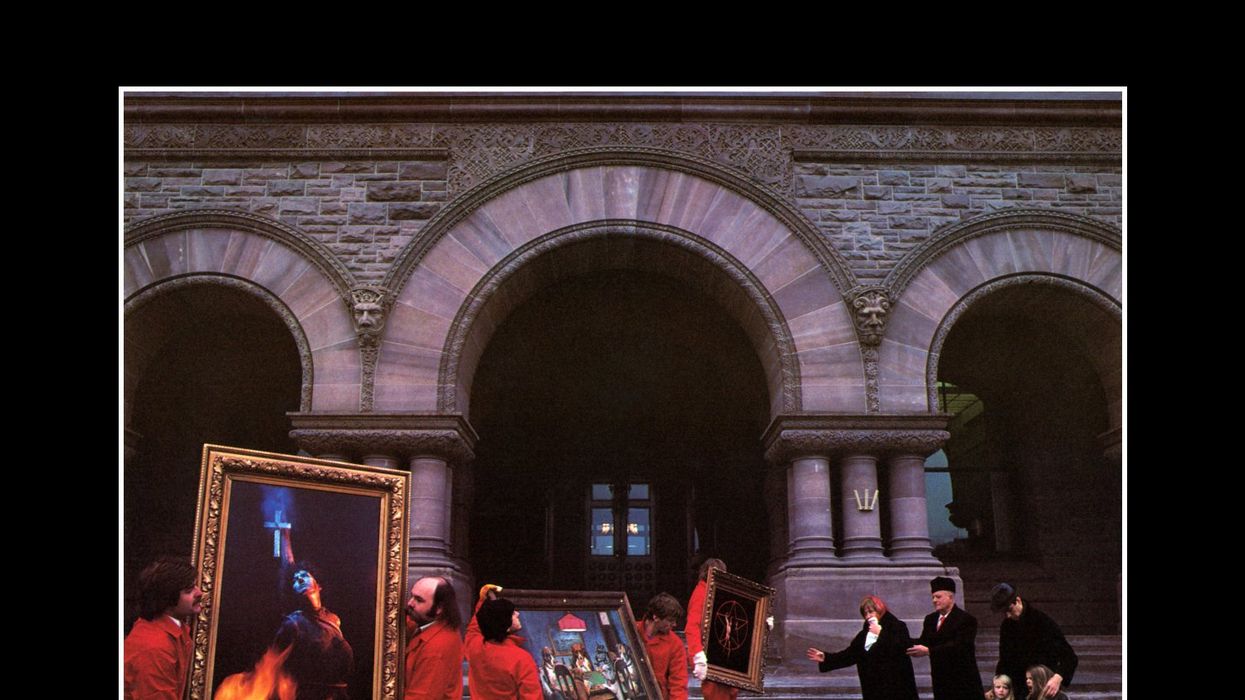In the fall of 1980, rock guitarists were still trying to wrap their heads—and fingers—around the wizardry of the still-ascendent Eddie Van Halen. By late 1983, many would begin to be mesmerized by the hellacious shredding of Yngwie Malmsteen. Both of these guitar greats were heavily influenced by classical music; EVH, who grew up playing classical piano, would only occasionally showcase what he’d learned in his playing (the classically tinged iconic tapping section of “Eruption” comes to mind). Malmsteen, on the other hand, would wear his classical influences on his sleeve, spearheading the rise of a new and more overt neoclassical guitar movement. Fittingly, right in between came the height of the brief but storied career of metal master Randy Rhoads.
While Rhoads was a serious classical guitarist whose arsenal held some devastating classically based rock licks, what was most striking about his playing was his unique way of weaving shades of classical music into his overall style, often yielding darker colors and textures.
Let’s begin by watching Rhoads tear through one of his classic solos while playing with former Black Sabbath frontman Ozzy Osbourne, who had just introduced him to the world.
Now, you might be asking, “Why not choose a video that shows Randy more clearly?” Sadly, not much exists. But we’ll keep searching as we explore some hallmarks of Rhoads’ peerless style.
Legato Twists and Turns
Rhoads’ originality and virtuosity were on full display in Osbourne’s band, where he would often weave legato scale patterns into his fills and solos. These were often three-notes-per-string patterns, characteristically dominated by fretting-hand hammer-ons and pull-offs.
If you normally play with your fretting-hand thumb over the neck, to effectively execute Ex. 1, you’ll need to adjust it so it’s more on top or behind. For the hammer-ons, be sure not to apply an overabundance of pressure, just enough to make the notes sound clearly. Pull off
in a slightly downward direction, but not so much that it creates a cat-like sound decried by legendary legato master Allan Holdsworth.
Rhoads subtly incorporated hints of his legato technique into his more bluesy playing, leading to sinewy licks like the one in Ex. 2.
Based on the F# natural minor scale (F#–G#–A–B–C#–D–E), Ex. 2 also includes the flatted fifth (C), borrowed from the F# blues scale (F#–A–B–C–C#–E). This note is also used to create more of an ominous sound, pioneered in metal by one of its founding guitar-fathers, Tony Iommi of Black Sabbath.
Relative to the root of a key, the flat fifth is found two and a half steps, or a tritone, higher (or lower). Like Iommi, Rhoads would often emphasize it in his songwriting. In the Middle Ages, the tritone was considered the “Devil’s interval” and was banned by the church. But that sort of thing suits metal music just fine. Ex. 3 illustrates one way to incorporate the flatted fifth into an F# minor-based riff, exploiting the interval’s trademark menacing sound.
Climbing Chromaticism
Rhoads would often shift phrases chromatically, going in and out of key, to dramatic effect:
Ex. 4 is based on a simple shape derived from the D minor pentatonic scale (D–F–G–A–C). Notice how you can fiendishly move it up the neck without regard for key.
Of course, you can also descend chromatically, as Rhoads does in Ex. 5.
Now, I know what you’re thinking: “Sure, that sounds great during an unaccompanied solo, but does it work in a real song?” Yep.
The crucial detail to remember here is to always end back in key, as in Ex. 6, which is in F# minor and ends on the third step of the scale (A).
Lethal Open-String Licks
Rhoads’ incorporation of open strings was both unique and lethal, and he would often summon lightning-quick and über-memorable fills, as he did in “Crazy Train” from Osbourne’s 1980 debut solo album Blizzard of Ozz.
Then there’s this barnburner, based on the A minor scale (A–B-C-D-E-F-G), from Blizzard’s “I Don’t Know.”
To completely capture Rhoads’ vibe here, try adding a pick harmonic to each picked note. They don’t even need to be very clear, just enough to make the notes squawk a bit.
The Difference a Year Makes
Recorded in 1981, just a year after Blizzard, Osbourne’s second album, Diary of a Madman, demonstrates just how much Rhoads’ style had matured. One area in which he clearly pushed himself was how he composed unique and complex backing music for his solos, like the tapping section from “Flying High Again.” (Rhoads tuned down a half-step for this album, but the related musical examples are indicated in standard tuning.)
In the key of A major (A–B-C#-D-E-F#-G#), albeit tuned down a half-step, Rhoads plays two series of tapped arpeggios, descending in a series of major and minor thirds, outlining some unusual chord progressions, namely A–F–D–Bb, immediately followed by E–C–A–F. It’s noteworthy that these progressions appear nowhere else in the song. Ex. 9 experiments with similar tapped arpeggios to create another uncommon chord progression. Note that Rhoads tapped with the edge of his pick, allowing for the example’s unique and bouncy tapping pattern.
For Diary of a Madman, Rhoads would draw inspiration from some of his favorite classical guitar music. For example, his intro to the title track is based on Cuban composer and guitarist Leo Brouwer’s Etude VI, and features some lush and beautifully dissonant chords. Ex. 10 is also inspired by this piece.
Tragically, Rhoads would be killed in an airplane crash in March of 1982, well before his time. There are some early recordings available of his former band, Quiet Riot, of which he was a founding member. But his star shined brightest on both Osbourne studio albums recorded over just a two-year period. However brief his career would ultimately be, and despite the dearth of video, his outsized influence continues to be felt by guitarists some 40 years later.


